Fish Bath Keep Your Fin Friends Happy & Healthy
Table of Content
- Dip: A Gentle Reset for Stressed Saltwater Fish
- Spa Day: A Step-by-Step Guide
- Bonus Tips for a Smooth Freshwater Dip Mission!s

Welcome to the ultimate guide for all beginner aquarium enthusiasts! If you're embarking on a journey into the vibrant world of keeping aquatic pets, then this article is your go-to resource. Discover how to choose and care for aquarium fish in a way that ensures their health, happiness, and longevity. In this comprehensive guide, we'll delve into the fascinating realm of aquarium fishkeeping, exploring the various types of fish available, their unique characteristics, and the ideal environments they thrive in. From vibrant bettas to elegant goldfish and mesmerizing guppies, you'll gain insights into the diverse array of species that can grace your underwater kingdom. Not only will we cover the essentials of setting up and maintaining an aquarium, but we'll also provide expert tips for meeting your fish's dietary requirements, optimizing water conditions, and ensuring their overall well-being. By the end, you'll be equipped with the knowledge and confidence to create a stunning and thriving aquatic habitat. Whether you're a complete novice or have already dipped your toes into the fishkeeping world, this guide will empower you to embark on an exciting and rewarding journey. Get ready to dive into the colorful and captivating world of aquarium fish!
When it comes to selecting fish for your aquarium, the options are truly endless. From the striking colors of bettas to the graceful movements of angelfish, each species brings its own charm to your underwater oasis. Understanding the various types of aquarium fish available is essential in creating a harmonious and visually appealing aquatic environment. Exploring freshwater fish species opens up a world of possibilities. You can opt for the vibrant hues of tetras, the playful nature of guppies, or the elegance of goldfish. Each species has its unique characteristics, such as schooling behavior, compatibility with other fish, and preferred water parameters. Researching and selecting fish that align with your aquarium size and setup is crucial for their well-being. Saltwater fish enthusiasts are treated to a dazzling array of species, from the iconic clownfish to the majestic angelfish. These fish bring a touch of the ocean into your home, showcasing a kaleidoscope of colors and patterns. It's important to consider the specific requirements of saltwater species, such as water salinity levels, tank mates, and potential territorial behavior, when introducing them to your aquarium.
Selecting the right fish for your aquarium involves a careful balance of aesthetic appeal, compatibility, and environmental needs. Whether you're drawn to the vibrant colors of tropical fish or the serene beauty of freshwater species, understanding the requirements of each fish is key to creating a thriving aquatic community. Before adding fish to your aquarium, research their preferred water parameters, diet, and temperament. Consider factors such as tank size, water temperature, pH levels, and compatibility with other fish species. It's essential to choose fish that can coexist peacefully and thrive in the same environment, minimizing stress and potential conflicts. When selecting fish, also take into account their adult size and growth potential. Some species may start small but grow significantly larger, requiring ample space to swim and develop properly. Planning for the long-term care of your fish ensures they have adequate room to flourish and reduces the need for frequent tank upgrades.
Creating a suitable habitat for your aquarium fish is the foundation of their health and well-being. Start by selecting an appropriately sized tank that accommodates the needs of your chosen fish species. Larger tanks provide more stability in water parameters and offer ample swimming space for active fish. Once you have your tank, focus on establishing a balanced ecosystem within it. Add a substrate layer for beneficial bacteria to thrive, aiding in nitrogen cycling and waste breakdown. Decorate your tank with live plants, rocks, caves, and other ornaments to provide hiding spots and visual interest for your fish. Installing a filtration system is crucial for maintaining water quality by removing debris and harmful substances. Choose a filter that suits your tank size and consider incorporating a heater to regulate water temperature. Monitor the tank's temperature, pH, and ammonia levels regularly to ensure a healthy environment for your fish.
Equipping your aquarium with the right tools is essential for creating a conducive environment for your fish to thrive. Invest in a high-quality filter to remove waste and maintain water clarity. Filters come in various types, including hang-on-back, canister, and sponge filters, each catering to different tank sizes and filtration needs. A reliable heater is vital for tropical fish species that require stable water temperatures. Select a heater based on your tank size and the temperature requirements of your fish. Additionally, consider a thermometer to monitor water temperature accurately and make adjustments as needed to ensure your fish remain healthy. Regular water testing is key to monitoring the quality of your aquarium's water parameters. Test kits for pH, ammonia, nitrite, and nitrate levels help you identify any imbalances or spikes that could harm your fish. Conduct routine water changes to maintain optimal water quality and remove accumulated waste and toxins.
Providing a balanced and nutritious diet is crucial for the health and vitality of your aquarium fish. Different species have varying dietary requirements, so it's essential to research the specific needs of your fish. Offer a mix of high-quality flake, pellet, frozen, and live foods to ensure a diverse and well-rounded diet. Feed your fish small portions multiple times a day, adjusting the amount based on their feeding habits and growth stage. Overfeeding can lead to water quality issues and health problems, so monitor your fish's consumption and remove any uneaten food promptly. Consider supplementing their diet with vegetables, algae, or specialized foods for certain species. Observing your fish during feeding times can provide valuable insights into their health and behavior. Ensure that all fish have access to food and monitor for any signs of aggression or competition during feeding. By offering a varied and balanced diet, you can support the overall health and vibrancy of your aquarium fish.
Water quality is a cornerstone of successful aquarium fishkeeping, influencing the health and longevity of your fish. Regular maintenance and monitoring of water parameters are essential to create a stable and thriving aquatic environment. Understanding the nitrogen cycle and its impact on water quality is key to preventing harmful ammonia spikes. Test your aquarium water regularly using reliable test kits to assess pH, ammonia, nitrite, and nitrate levels. Monitoring these parameters allows you to identify any fluctuations and take corrective actions promptly. Conduct partial water changes on a routine basis to remove accumulated waste and refresh the water, promoting a healthy ecosystem. Maintaining proper filtration is crucial for removing debris, uneaten food, and fish waste from the water. Clean or replace filter media as needed to prevent clogs and ensure optimal filtration efficiency. Avoid overcleaning your filter to preserve beneficial bacteria that aid in breaking down waste and maintaining water quality.
Understanding common aquarium fish diseases is essential for safeguarding the health of your aquatic pets. Prevention is key in minimizing the risk of infections and illnesses that can harm your fish. Recognizing the signs of disease early allows for prompt intervention and treatment to improve the chances of recovery. One prevalent disease among aquarium fish is ich, or white spot disease, caused by a parasite that manifests as white spots on the fish's body. Quarantining new fish before introducing them to your main tank helps prevent the spread of diseases. Maintain good water quality, proper nutrition, and stress-free conditions to boost your fish's immune system. Other common ailments include fin rot, bacterial infections, and parasitic infestations, each requiring specific treatments and care. Regular observation of your fish for unusual behavior, changes in appetite, or physical symptoms is crucial for detecting health issues early. Consult with a vet or experienced aquarist for accurate diagnosis and treatment options.
Enhancing the visual appeal of your aquarium not only creates a stunning display but also provides enrichment for your fish. Incorporate a variety of decorations, such as driftwood, rocks, plants, and caves, to mimic a natural underwater habitat. Create different levels and hiding spots to cater to the diverse needs of your fish. Live plants not only add beauty to your aquarium but also contribute to water quality by absorbing nitrates and providing oxygen. Choose plant species that are suitable for your lighting and substrate conditions, ensuring they receive adequate nutrients for growth. Regular pruning and maintenance help keep your plants healthy and prevent overgrowth. Consider the overall theme and aesthetic you want to achieve with your aquarium decor. Whether you prefer a lush planted tank or a minimalist design, select ornaments and substrate that complement your fish species and create a cohesive look. Experiment with different layouts and arrangements to find the perfect balance of functionality and aesthetics.
Congratulations on embarking on your journey into the colorful world of aquarium fishkeeping! By following the tips and guidelines outlined in this ultimate guide, you're well-equipped to create a thriving aquatic habitat for your fish. Remember to research, plan, and monitor your aquarium regularly to ensure the health and happiness of your aquatic companions. Owning aquarium fish offers a host of benefits, from relaxation and stress reduction to learning opportunities and a deeper connection with nature. Watching your fish swim gracefully, interact with each other, and explore their underwater world is a rewarding experience that brings joy and tranquility into your life. Embrace the beauty and wonder of aquarium fishkeeping as you embark on this exciting and fulfilling journey! Read more
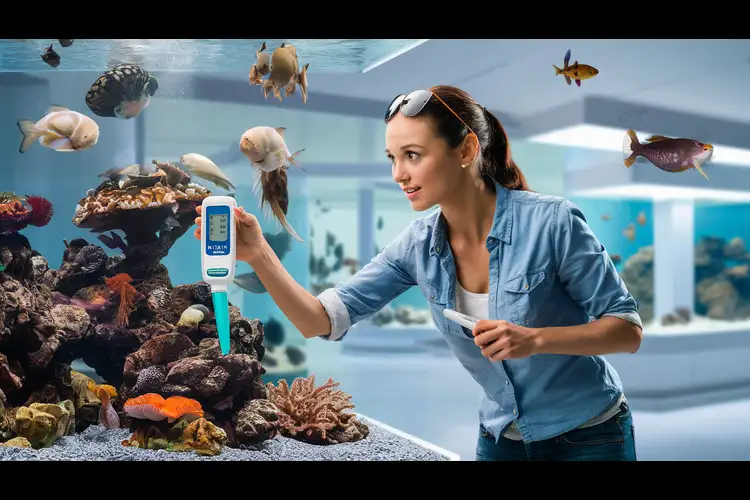
Table of Contents
Aquarium water quality is crucial for the health of your fish, but it’s often overlooked by fish keepers. Unlike humans, who can leave hazardous environments, fish are confined to their tanks and cannot escape if their water becomes toxic. Understanding and maintaining the right balance of water elements—such as ammonia, nitrite, phosphate, and pH—is essential for a healthy aquarium. Proper water management ensures that your aquatic pets thrive in a safe and stable environment, preventing stress and disease while promoting their overall well-being and longevity.
Ammonia is a natural byproduct of fish metabolism and can be extremely harmful if it accumulates in the water. It is one of the leading causes of fish distress and sudden death. Ammonia poisoning is especially common in newly set up aquariums before beneficial bacteria establish themselves. It can also occur in established tanks if too many fish are added at once, if the filter fails, or if beneficial bacteria die off due to medications or sudden water condition changes.
Warning: Ammonia poisoning can be lethal and must be addressed immediately.
Algae growth is inevitable in any aquarium. While some algae are normal and even beneficial, excessive growth can be unsightly and harmful. Factors contributing to excessive algae include too much light, overfeeding, and infrequent water changes, which lead to an accumulation of phosphate or nitrate. To combat algae, consider adding algae-eating fish or using commercial algaecide products.
Regular water testing can be invaluable in diagnosing and resolving aquarium problems. Essential tests include those for ammonia, nitrite, and nitrate, as these compounds can be harmful to fish if they accumulate. Testing for minerals like pH, hardness (GH), and alkalinity (KH) is also important, as well as for chlorine, chloramine, copper, and phosphate, which may be present in tap water. New aquariums should be tested daily or several times a week. Established aquariums can be tested every few weeks to monthly.
Cloudy water can result from several causes, each with its solution. In new aquariums, unwashed gravel can cause cloudiness, which will clear after a few days. Bacterial blooms can also make water cloudy until the bacteria settle. Overfeeding and dirty filters can contribute to cloudiness as well. Testing for ammonia and nitrite can help determine if these are causing bacterial growth. Solutions include water changes, cleaning the filter, increasing filtration, and using chemicals to clear the water.
Rocks can alter your aquarium's water chemistry. To test if a rock is safe, apply vinegar or another acid to its surface; if it bubbles, don’t use it. Soaking rocks in water and monitoring pH changes can also help determine their safety. For freshwater aquariums, avoid using gravel made from limestone, dolomite, aragonite, crushed coral, or oyster shells, as they can raise water hardness and pH. Always rinse rocks and gravel thoroughly before adding them to the aquarium.
Sudden, large water changes can be harmful to fish. It's essential to ensure the new water is dechlorinated and at the same temperature as the aquarium water. Adjusting the pH of new water to match the aquarium’s current pH is also crucial, as aquarium water pH tends to decrease over time and needs to be buffered to the correct level. Regular water changes are necessary but should be done carefully.
Nitrite poisoning often follows ammonia poisoning and can be just as deadly. Elevated nitrite levels can quickly become toxic. Symptoms include poor appetite, inactivity, fish gathering near the filter outflow, and brown-colored gills. Immediate water changes and adding 1-3 teaspoons of sea salt per gallon can help reduce nitrite toxicity.
Warning: Nitrite poisoning requires prompt action to prevent fish deaths.
The nitrogen cycle, or cycling, is essential for establishing a healthy aquarium. This process involves beneficial bacteria breaking down toxic ammonia from fish waste into nitrite, and then into less harmful nitrate. New aquariums typically take 4-6 weeks to complete this cycle. Understanding the nitrogen cycle is critical to preventing fish loss due to toxic buildup.
Phosphate, present in every aquarium, can lead to excessive algae growth if it accumulates. Phosphate levels can rise from tap water and fish food. Testing your tap water and using deionized or reverse osmosis filtered water for changes can help manage phosphate levels. Regular water changes using dechlorinated tap water can also keep phosphate levels low if your tap water is phosphate-free.
pH measures the acidity or basicity of water on a scale of 1-14, with 7 being neutral. Different fish species prefer different pH levels depending on their natural habitats. Most freshwater aquarium fish thrive in a pH range of 7.0 to 7.5. Gradual changes in pH are necessary to avoid stressing the fish.
By maintaining balanced water conditions and understanding the factors affecting your aquarium, you can ensure a healthy environment for your fish.
Maintaining optimal water quality is crucial for the health of aquarium fish. By understanding and managing key water parameters such as ammonia, nitrite, phosphate, and pH, fish keepers can prevent common issues that lead to fish stress and mortality. Regular testing, careful water changes, and proper tank maintenance are essential practices. Awareness of the nitrogen cycle, recognizing poisoning symptoms, and managing algae growth are also vital. By staying informed and proactive, aquarists can ensure a healthy, vibrant environment where their fish can thrive.
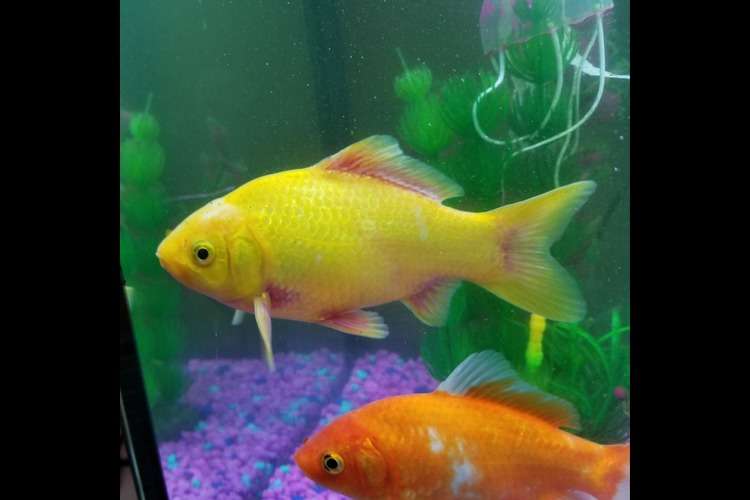
So how do we identify these ammonia burns? Here's what to watch out for:
Look for inflamed gills or patches of redness on your fish's body.
Stressed fish often keep their fins tight against their body.
Rapid rubbing against objects can be a sign of irritation.
Fish may become listless and lose their appetite.

Tap water might seem harmless, but it can be hiding a secret weapon – chloramine! This chemical releases ammonia into your tank, turning your water change into a recipe for disaster. Dechlorinators are your heroes here, removing chlorine and ammonia before they harm your fish.
Moving fish is stressful enough, but imagine being stuck in a tiny bag with your own waste! This rapidly creates a toxic ammonia environment. Always acclimate your fish properly before releasing them into the tank, and remember, ammonia builds up fast in small spaces.
Treating sick fish in quarantine tanks is necessary, but these tanks often lack the beneficial bacteria needed to control ammonia. This can lead to a build-up and potential burns, so be extra vigilant about monitoring ammonia levels in quarantine tanks.
A tank teeming with fish might look lively, but it's a recipe for disaster. Too many fish means too much waste, overwhelming the good bacteria and causing ammonia to skyrocket. Think of it as overcrowding a house – eventually, trash builds up!
This is a time-sensitive mission! The first step is to perform a large water change, flushing out that nasty ammonia like putting out a fire. Use an ammonia test kit to double-check and make sure the enemy is defeated!
Fish with ammonia burns might also have picked up some nasty bacterial infections during the attack. Isolate them in a quarantine tank (QT) – think of it as a hospital room for your fish! Make sure you follow proper QT protocol, it's like a medical procedure for your fin-tastic friends.
Time to arm your fish with some fishy antibiotics or antibacterial medication in the QT. These work like magic weapons, zapping those pesky bacterial invaders. Important note: Don't use antibiotics in your main tank! They can harm the good bacteria that keeps your water clean, making things worse in the long run.
Keep a close eye on your fish in the QT. If they start eating normally within 3-5 days, it means the treatment is working! Once they're healthy and happy again, you can celebrate by returning them to the main tank – mission accomplished!
Most fish with ammonia burns can bounce back like champs, especially if they avoid nasty secondary infections. With proper treatment, you can expect them to be swimming happily back in the main tank within a week!
Severe infections or a sudden spike in ammonia levels can be fatal. It's like a double whammy for your fish. Prevention is Key! Here's how to keep ammonia burns at bay:
This is the good bacteria army that breaks down fish waste, keeping ammonia levels in check. Think of them as tiny underwater garbage collectors! A good biofilter is your fish tank's first line of defense.
Regular water changes are like cleaning house for your tank. In a new tank, do weekly water changes (10% or more) to help the good bacteria get established. For seasoned tanks, aim for 25% water changes every 2-4 weeks.
Pet stores sell special products that bind ammonia in the water, rendering it harmless to your fish. These are like ninja stars that neutralize the ammonia threat! Just remember to test your water and follow the instructions for dosage carefully.
By regularly monitoring ammonia levels, you can prevent these burns before they even start. Think of it as keeping a watchful eye on your water quality – an ounce of prevention is worth a pound of cure (or a tank full of burned fish)!
Read more

Aquarium plants do more than enhance the aesthetic appeal of your tank. They play a crucial role in creating a balanced ecosystem, providing oxygen, shelter, and even acting as a natural filter. Whether you’re a seasoned aquarist or just starting out, selecting the right plants can be a game-changer. Here's a guide to the best aquarium plants that will transform your tank into a vibrant underwater paradise.
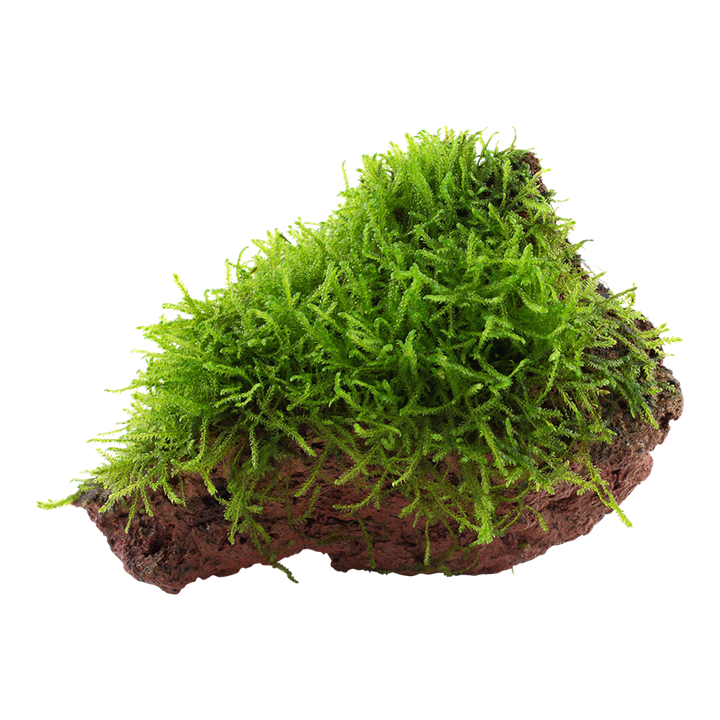
Java moss is ideal for beginners due to its low maintenance. It can be attached to driftwood, rocks, or left floating. It helps reduce nitrates and provides hiding places for fish fry, like Betta fish and Guppies.
Care Tips:
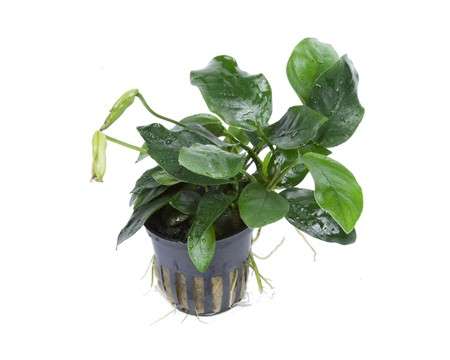
Anubias Nana tolerates a wide range of water conditions and requires minimal pruning. Its dark green leaves add a striking contrast to aquascapes, making it a great companion for Angelfish and Neon Tetras.
Care Tips:

Amazon Sword is ideal for background planting and great for improving water quality. Its fast growth makes it suitable for larger fish tanks with species like Oscar fish and Discus fish.
Care Tips:

Cryptocoryne Wendtii comes in green, brown, and red variants, making it perfect for midground planting. It can thrive in low-light conditions, making it suitable for tanks with Corydoras catfish and Harlequin Rasboras.
Care Tips:
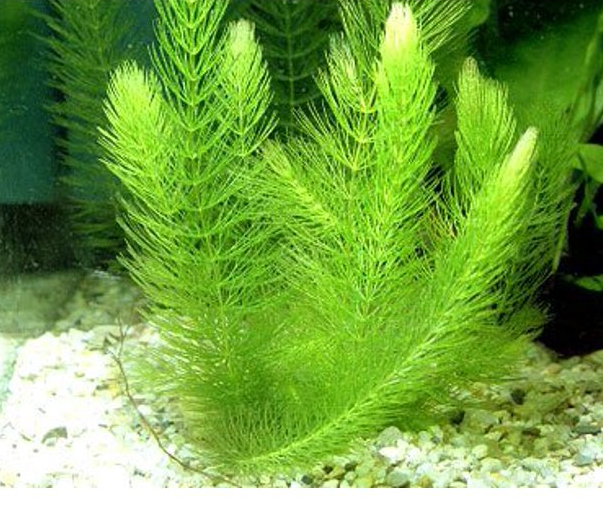
Hornwort is fast-growing and excellent for absorbing excess nutrients. It provides cover for fish fry, such as Platies and Molly fish. It can be anchored or left free-floating.
Care Tips:
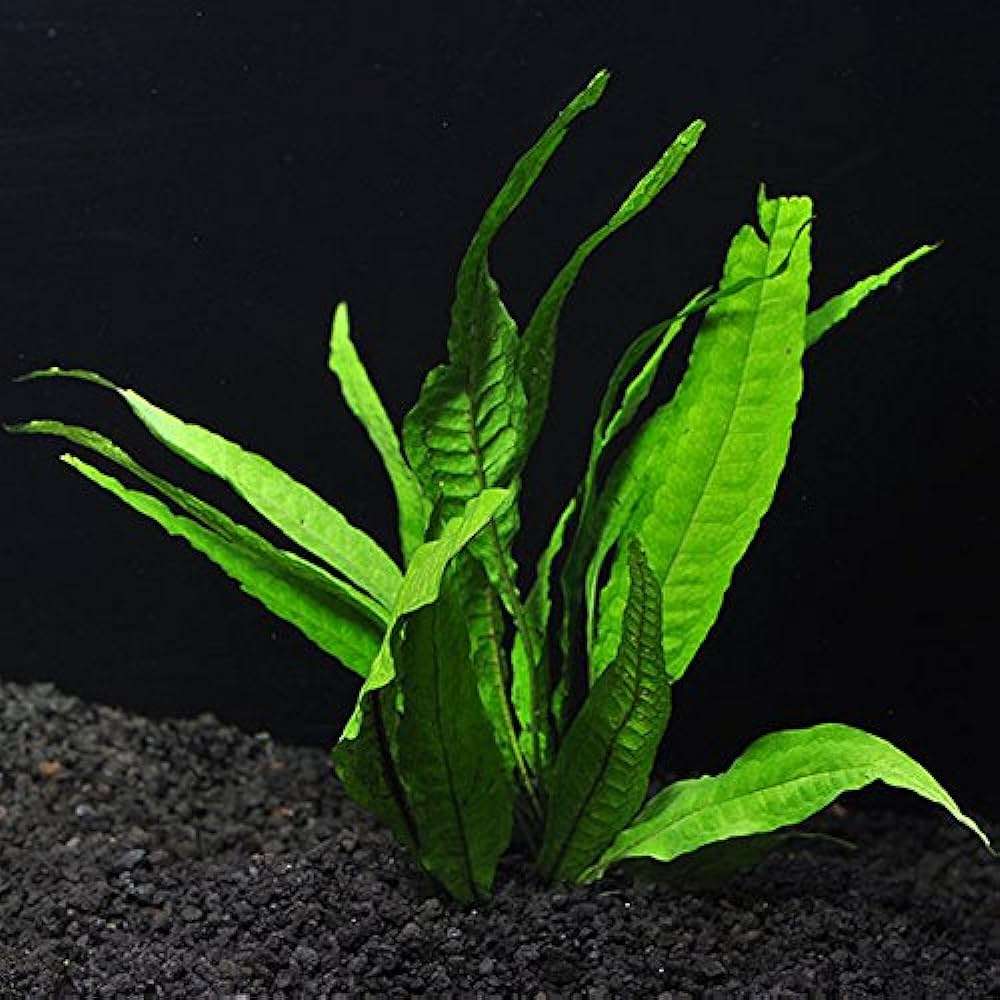
Java Fern has long, flowing leaves that create a natural look. It thrives in low-light conditions and can be attached to hardscapes or left to float. It pairs well with Gouramis and Barbs.
Care Tips:
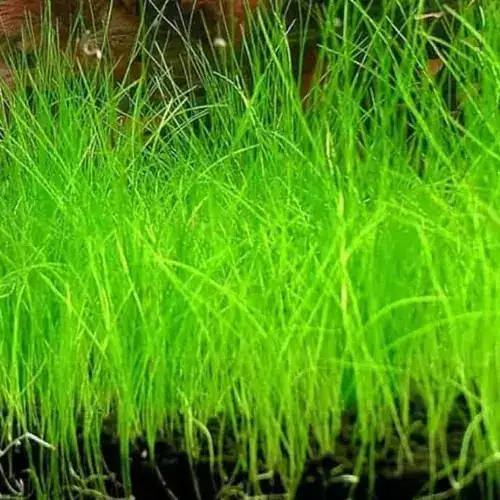
Dwarf Hairgrass creates a lush, grassy foreground, ideal for aquascaping. It helps create a sense of depth in the tank, making it perfect for tanks with Cherry Shrimp and Otocinclus.
Care Tips:
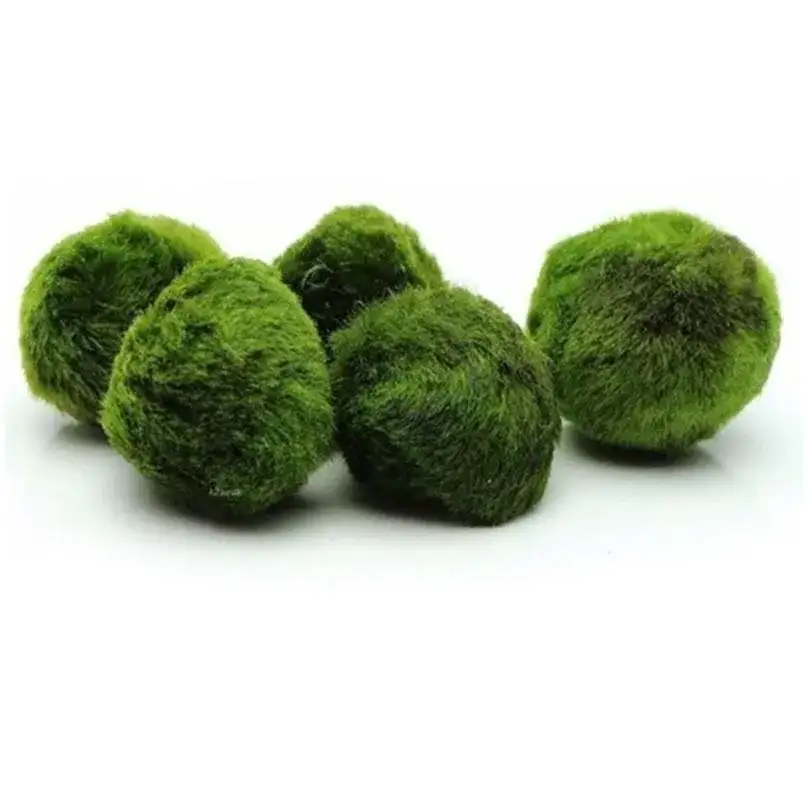
Marimo Moss Balls have a unique, round, velvety appearance. They require occasional rinsing and rolling and absorb nitrates, helping maintain water quality. They are a fun addition for tanks with Goldfish and Betta fish.
Care Tips:

Water Wisteria is fast-growing and adaptable, thriving in various water conditions. It can be planted in substrate or floated, making it versatile for tanks with Zebra Danios and Swordtails.
Care Tips:

Bacopa Caroliniana emits a lemony scent when crushed. It grows well from cuttings and adds height and texture to aquascapes, making it suitable for tanks with Betta fish and Tetras.
Care Tips:
Selecting the right plants for your aquarium is essential for creating a thriving aquatic environment. From low-maintenance options like Java Moss and Anubias Nana to fast-growing species like Amazon Sword and Hornwort, there's a plant for every tank setup and skill level. By choosing a variety of plants and maintaining them properly, you’ll ensure a beautiful, healthy aquarium that both you and your fish will enjoy.
For more tips and supplies, visit Fishelly.
Read more

Happy Aquatic Life starts with the right Tank Size! Find expert tips on selecting the perfect aquarium for your underwater friends today.
Imagine you are in a situation where there is not enough space for you to move! Or you are in a place where you can’t find any end! Is this okay for you!? When you search in google for the right tank size, you’ll find plenty of content that shows different ways on how to choose the right tank size! Right?
Fish are our friends. Will you allow your fish to get irritated? Or will you make them uncomfortable? Obviously not! The person who brought an aquarium for their house or for any commercial user is always a great fish lover. People never waste their money on any unwanted stuff.
Spending money on something might have some purpose. For example, bringing fish to your home will offer you with good decor, keep fish for a pet, entertainment purpose, etc. If we are using fish for our good we have to take care of them. Agree!?
Many people think, “aren't bigger tanks always better?” While spacious tanks offer undeniable advantages, the truth is, choosing the right size ( of aquarium) for your specific needs is essential for long-term health and happiness.
This guide will delve into the reasons why tank size is more than just aesthetics. We'll explore how the size of your aquarium impacts various aspects of fishkeeping, from water quality and filtration to fish compatibility and overall well-being.
The vibrant fish and mesmerising coral initially steal the show. You know!? The foundation of a thriving saltwater aquarium lies in its unseen hero: water volume. It's more than just a container; water volume plays an important role in maintaining a stable and healthy environment for your aquatic inhabitants.
Here let’s delve into the science behind water volume and its impact on various aspects of your saltwater tank.
Fish produce waste, and in a confined space like an aquarium, these waste products can quickly accumulate, leading to detrimental effects on water quality. Ammonia, a toxic byproduct of fish respiration and decomposition, is a prime concern. Here's where water volume comes into play:
Larger Dilution Capacity: A bigger tank offers a larger volume of water, acting like a bigger dilution pool for waste products. This allows for more time for beneficial bacteria in your filtration system to break down ammonia into less harmful nitrates before they reach dangerous levels.
Reduced Ammonia Spikes: Smaller tanks are more susceptible to sudden spikes in ammonia levels due to factors like overfeeding or fish stress. A larger water volume provides a buffer, mitigating the impact of these spikes and allowing your filtration system to catch up.
While ammonia is the immediate threat, the story doesn't end there. Beneficial bacteria convert ammonia into nitrates. While less toxic, nitrates can still accumulate in a closed system like an aquarium. Here's how water volume influences nitrate management:
Slower Nitrate Build-up: Larger tanks provide more space for dilution, allowing nitrates to build up at a slower rate. This gives you more time between water changes to maintain healthy nitrate levels.
Impact on Water Changes: Smaller tanks require more frequent water changes to keep nitrate levels in check, whereas larger tanks can benefit from slightly less frequent water changes due to the dilution effect.
Saltwater aquariums thrive on consistency in key water parameters like pH, alkalinity, and temperature. Water volume plays a role in maintaining this crucial equilibrium:
Larger Buffer: Larger water volumes act as a buffer, helping to resist fluctuations in water parameters caused by factors like evaporation, fish waste, or the addition of medications.
Slower Parameter Shifts: In smaller tanks, even minor changes in these parameters can have a more significant impact. A larger water volume helps to dampen these shifts, providing a more stable environment for your fish.
Water volume isn't just about managing waste and maintaining parameters. It also influences other aspects of your saltwater aquarium:
Fish Compatibility: Different fish species have varying space requirements for swimming, territorial behaviour, and overall well-being. A larger tank allows for a wider variety of fish and promotes peaceful coexistence.
Oxygen Levels: While water surface area plays a role in gas exchange, a larger volume can hold more dissolved oxygen, crucial for fish respiration.
Aquascaping Options: Larger tanks offer more space for creative aquascaping, allowing you to create intricate rockwork and coral displays.
Creating a thriving underwater world for your fish goes beyond just adding water and colourful decorations. Each fish species has unique needs, or requirements and finding the right balance between tank size, community compatibility, and environmental factors is important for their long-term health and happiness.
Here are the reasons that you must think before choosing fish:
The first step is to research the specific needs of the fish species you're interested in or you are going to purchase. Here are key factors to consider:
Adult Size: Fish can grow significantly! Choose a tank size that accommodates their full-grown length and width comfortably.
Swimming Behaviour: Active swimmers, like tetras or barbs, require more space to explore. Bottom feeders or slow-moving fish can do well in smaller tanks.
Schooling vs. Solitary: Schooling fish need ample space to swim together, while solitary fish might prefer hiding spots and a bit more personal space.
Territoriality: Some fish species are highly territorial and require larger tanks with hiding places and visual barriers to break sightlines. Research potential tankmates carefully to avoid conflicts.
Once you understand your fish's needs, use this thumb rule for minimum tank size:
Length of Adult Fish x Number of Fish = Minimum Tank Length in Inches
For example, if you want to keep 5 Neon Tetras (adult size: 1 inch), a 10-gallon tank (minimum) would be appropriate (5 x 1 = 5 inches).
Don’t try to push everything in at once because overcrowding is a major stressor for fish, leading to health problems and aggression.
You also have to think about your fish mates. You can choose your fish mates according to below factors:
Temperament: Peaceful fish shouldn't be housed with aggressive or predatory species.
Fin nippers: Some fish (like Barbs) are known for nipping fins. Avoid keeping them with species with flowing fins (like Angelfish).
Size Differences: Small fish can become meals for larger tank mates. Choose fish of similar sizes to prevent predation.
Choosing your favourite fish and fish mates doesn’t mean that your responsibility is over! You have to maintain your aquarium’s environment too. Let’s check out how you can create the best aquarium for fish?
Water Quality: Regular water changes and proper filtration are vital to maintain clean and healthy water.
Decoration: Provide hiding places (especially for shy fish), plants for a natural feel, and visually interesting elements.
Diet: Feed your fish a high-quality diet appropriate for their species and needs.
Lighting: Replicate natural lighting patterns with a timer to ensure proper day and night cycles.
By following all the above guidelines and prioritising your fish's well-being, you can create a balanced and thriving aquatic environment where your chosen fish can flourish.
Remember, happy fish are colourful fish! So give them the space,environment, and care they deserve to enjoy a long and healthy life in their underwater home.
Well-functioning filtration system requires crystal-clear water, healthy fish, and a thriving aquarium. – But did you know that the size of your aquarium or tank plays a crucial role in choosing the most effective filter? Here's a detail about the relationship between tank size and filtration efficiency:
Aquarium filters are the workhorses of your aquatic world and they perform three essential functions: Mechanical Filtration: Removes physical debris like fish waste, uneaten food, and decaying plant matter.
Biological Filtration: Houses beneficial bacteria that break down harmful ammonia and nitrite into less toxic nitrate.
Chemical Filtration: Certain filter media can remove dissolved impurities and medications from the water.
Bigger ones always need more water and at the same time they produce more waste. This directly impacts your filtration needs: Larger Tanks: Require filters with a higher gallons-per-hour (GPH) flow rate. This ensures sufficient water turnover throughout the tank, carrying waste to the filter for processing.
Smaller Tanks: Can benefit from filters with lower GPH rates, as excessive flow can overwhelm the biological filtration capacity.
Here are some key factors to consider when selecting a filter based on tank size: Filter Media Capacity: Choose a filter with enough media volume to accommodate the size of your tank and the bioload (total amount of waste produced) of your fish.
**Filter Types: **Hang-on-Back (HOB) Filters: Great for small to medium tanks. They offer moderate flow and media capacity.
Canister Filters: Ideal for medium to large tanks. They provide powerful flow, ample media space, and quiet operation.
Sump Filters: Perfect for very large tanks. These external filters offer exceptional filtration capacity and can house a variety of media types.
Regular Filter Maintenance: Clean or replace filter media as per manufacturer's instructions. Clogged media hinders water flow and reduces filtration effectiveness.
Proper Water Changes: Even with the best filter, water changes are vital. Remove a portion of the water (usually 10-25%) regularly to dilute accumulated nitrate and maintain water quality.
Stocking Levels: Avoid overcrowding your tank. Excessive bioload can overwhelm your filtration system and negatively impact fish health.
Tank Shape: Long and narrow tanks might require more powerful filters to ensure proper water flow across the entire length.
Fish Species: Some fish (like messy eaters) generate more waste, impacting filter requirements. Once you understand the link between your tank size and filtration, you will create a clean and healthy environment for your loving aquatic friends. Note that correctly chosen and maintained filters are the cornerstone of a thriving aquarium.
Bonus Tip: Consider using a biological media booster to enhance the growth and colonisation of beneficial bacteria in your filter, further improving its effectiveness.
An aquarium is not only a fish tank, it is more than that; it’s a captivating underwater world that you have created. Do you know!? The size of your fish tank plays a crucial role in shaping its visual appeal and design possibilities? Let's understand the fascinating world of aquascaping through the lens of tank size:
Imagine a blank canvas. Smaller canvases limit the details you can incorporate, while a larger one allows for a grand masterpiece. Just like a canvas, tank size dictates the overall impression and design elements you can integrate: Small Tanks (Under 20 Gallons): These tanks are like miniature gardens. Think minimalist layouts with delicate plants, rocks, and smaller fish that complement the intimate scale.
Design Tips: Focus on a single focal point, like a unique rock or centrepiece plant. Opt for carpeting plants and small schooling fish for a sense of movement.
Medium Tanks (20-55 Gallons): This range offers more creative freedom. You can create natural landscapes with rockwork, introduce larger centrepiece fish, and incorporate a wider variety of plants.
Design Tips: Experiment with depth perception using substrate slopes and utilise background plants to create a sense of space. Consider including driftwood for a natural touch.
Large Tanks (55 Gallons and Up): These tanks are like underwater vistas. You can create elaborate aquascapes with diverse plant life, intricate rock formations, and a stunning array of fish.
Design Tips: Think big! Utilise open space for swimming fish, create underwater caves with rockwork, and incorporate dramatic lighting effects to accentuate the depth and beauty of your creation.
While size sets the stage, other factors influence your aquascaping masterpiece:
Tank Shape: Rectangular tanks offer more layout options, while curved tanks create a panoramic view.
Fish Selection: Choose fish that complement your chosen theme and size limitations.
The Rule of Thirds: Divide the tank visually into thirds horizontally and vertically. Place key elements at the intersection points for a balanced composition.
Whenever you choose your tank always consider its size, fish types, fish mates, and lighting of your tank. All of the above factors will help you to create breathtaking underwater masterpieces rather than just a simple tank.
Remember, your masterpiece always needs consistent care. However, did you know that the size of your tank can significantly impact the frequency and complexity of maintenance routines? Here's a breakdown of how tank size influences the workload of keeping your aquatic world sparkling clean:
Imagine dropping a single drop of ink into a small glass of water versus a large bucket. In the smaller container, the ink concentration will be much stronger, requiring a more frequent cleaning. Similarly, in a smaller tank, waste products accumulate faster, necessitating more frequent maintenance:
Smaller Tanks (Under 20 Gallons): Due to limited water volume, these tanks are prone to quicker fluctuations in water parameters. Frequent (weekly or even bi-weekly) water changes (around 25%) are crucial to maintain water quality. Cleaning filter media and gravel vacuuming become essential to remove waste buildup.
Medium Tanks (20-55 Gallons): These tanks offer some breathing room. Water changes can be performed every 1-2 weeks (around 25-30% each time). Filter cleaning and gravel vacuuming remain important, but might be needed slightly less frequently compared to smaller tanks.
Large Tanks (55 Gallons and Up): Larger tanks offer greater dilution capacity. Water changes can be less frequent (every 2-4 weeks, around 30-50% each time). However, maintaining water quality still requires vigilance. Regular filter cleaning and gravel vacuuming are essential to prevent waste buildup.
Tank size also influences other maintenance aspects: Algae Control: Smaller tanks are more susceptible to algae outbreaks due to faster nutrient fluctuations. Regular monitoring and algae removal might be necessary.
Water Parameter Testing: Testing water parameters like ammonia, nitrite, nitrate, and pH is crucial regardless of tank size. However, smaller tanks might require more frequent testing due to quicker parameter changes.
Equipment Maintenance: Filters of all sizes need regular cleaning. However, larger filters might require less frequent cleaning intervals due to their increased capacity.
Bioload: The number and size of fish in your tank will significantly impact the frequency of maintenance needed.More fish create more waste, requiring more frequent water changes and cleaning.
Filtration Efficiency: A properly sized and maintained filter plays a critical role in reducing maintenance needs. A good filter can help maintain water quality for longer periods. Proper care and a well established routine keeps your tank clean and makes your fish healthy and happy.
For many, the vibrant allure of a coral reef beckons, but the thought of a massive tank and complex care can feel daunting. However, a hidden gem awaits in the world of aquariums – the nano-reef! These compact saltwater havens offer a captivating underwater experience in a manageable size, making them perfect for beginners or those with limited space. Here are the benefits:
Nano-reefs, typically tanks under 30 gallons, burst with colour and life. While smaller in scale, they can be just as stunning as their larger counterparts. Here's why they're gaining popularity:
Space-Conscious: Live in an apartment or have limited floor space? Nano-reefs fit comfortably on desks, stands, or countertops, bringing a touch of the ocean into your living space.
Beginner-Friendly: The smaller volume allows for easier maintenance and water parameter control, making it a great introduction to the fascinating world of saltwater aquariums.
Lower Costs: Smaller tanks require less equipment, water, and livestock, leading to a more budget-friendly saltwater experience.
Focus on Detail: The smaller size encourages a more intimate experience, allowing you to focus on intricate aquascaping with corals and invertebrates, creating a miniature underwater masterpiece.
Beyond practicality, nano-reefs offer a unique set of advantages: Community and Sharing: The nano-reef community is known for its passionate hobbyists who share knowledge and tips, making it easier to learn and troubleshoot challenges.
Quick Results: Due to the smaller volume, changes in the tank are more readily observed. You can witness the growth of corals and the vibrant life thriving in your nano-reef much faster.
A Sense of Accomplishment: Maintaining a healthy and thriving nano-reef, despite its smaller size, requires dedication and knowledge. Successfully caring for your miniature underwater world brings a rewarding sense of accomplishment.
While downsizing has its perks, it requires careful planning: Research is Key: Understanding the specific needs of corals and saltwater fish suitable for nano-reefs is crucial.Choose hardy and compatible species that thrive in smaller environments.
Proper Equipment: Invest in high-quality filtration, lighting specifically designed for nano-reefs, and protein skimmers to maintain optimal water quality for your delicate inhabitants.
Stability is Paramount: Strict adherence to water changes, regular testing of water parameters (pH, alkalinity,salinity), and careful stocking are essential for maintaining a stable and healthy nano-reef ecosystem.
Nano-reefs offer a captivating and manageable gateway into the vibrant world of saltwater aquariums. Whether you're a space-conscious enthusiast or a curious beginner, these miniature underwater havens provide an opportunity to learn,create, and experience the joy of a thriving coral reef, all within a captivatingly small scale. So, embrace the trend of downsizing, embark on your nano-reef journey, and discover the beauty that awaits in a world of miniature marvels.
Big or small tank — that depends on your choice and needs. Understanding all the above aspects, you need to choose the right tank size. From the above content I have clarified everything about fish tank size and its maintenance. So don’t take it lightly. Do proper research and understand your fish needs and then choose your tank size.
Read more